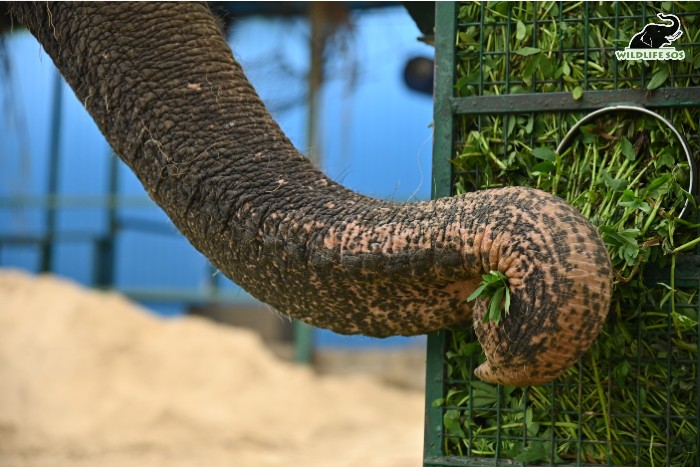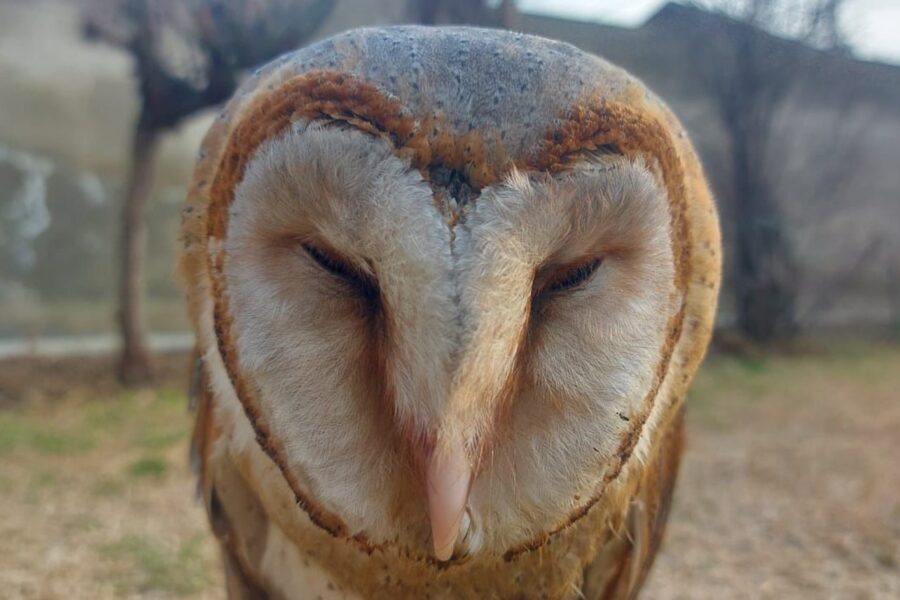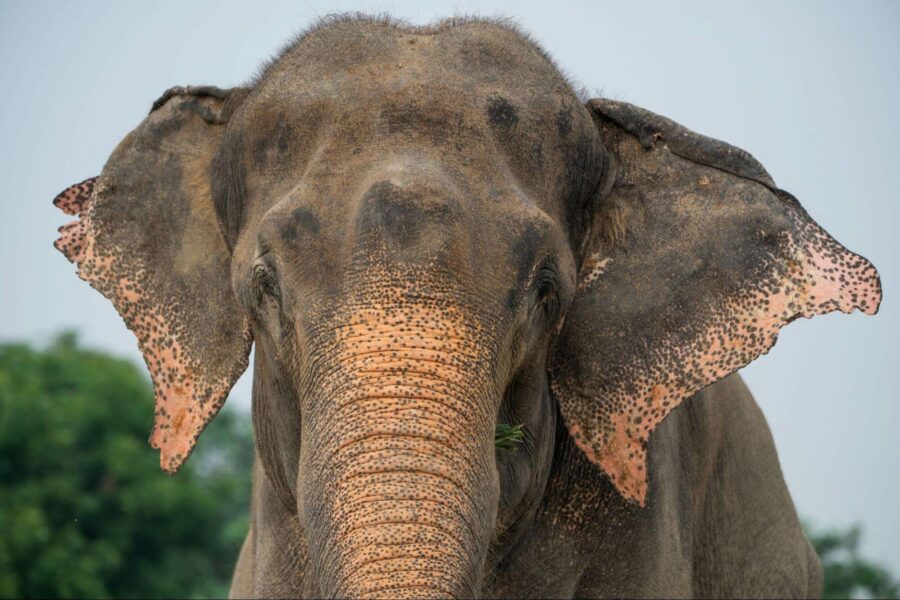Wildlife SOS launches an exciting series that explores animal senses! While some animals have a heightened sense of smell, some rely on their strong sense of sight to navigate. There are animals with an ability to hear sounds at extraordinary frequencies. Whether it is their unique touch receptors or an impressive sense of taste, every animal finds a fitting place in the ecosystem of its wild habitat.
Read on to know more about the tactile sense of animals!
Cotton balls are soft, but bath sponges are rough. Ice is too cold to hold for long, as is a hot cup of tea. Human beings become highly aware of how the objects around them feel, and how they should react to them. And we gain this knowledge because of one of the most incredible senses we have — the sense of touch.
Non-human animals too are gifted with their own powerful senses that they use to experience their surroundings. Their tactile receptors have evolved in a proficient way to play a key role for their survival in the wild. Let’s get to know more about the superior sense of touch some of the animal species have!
Tigers
Tigers (Panthera tigris) are apex predators known for their strength, stealth, and sharp senses. What’s fascinating is that it is their highly sensitive whiskers that act as sensors of touch! These hairs can pick up and relay essential information to the large cats about their environment and their prey, both of which are crucial for their survival.
Tigers’ whiskers are deeply embedded in their skin and are connected to a network of nerve endings, making them remarkably responsive to the slightest touch or vibration. They help the tiger to assess the width of passages they navigate, and determine exactly when to attack and where to bite into its prey. Tigers are nocturnal animals, and these sensitive whiskers accompany their strong night vision.
Tigers have five kinds of whiskers in five places on their body. Cheek whiskers are placed towards the back of the cheeks, and are right behind the mystacial whiskers on the muzzle. Superciliary whiskers are present above their eyes to protect them while hunting, prompting them to blink when they come closer to objects in the surroundings. Sensory neurons on the tiger’s facial region can pick up even minute changes in the air or wind around its whiskers, which also lets it know in which direction its prey is. What many may not is know that along with the face, cats have whiskers on their forelimbs and body as well! Carpal whiskers of striped felines are found at the back of their front legs, and tylotrich whiskers, which are shorter in length, are distributed throughout their body — like a full bodysuit!
Sea Otters
Sea otters (Enhydra lutris) use a special advantage that helps them survive in the ocean — their tactile receptors. The marine mammals have hairless skin on their forefeet paws, nose, lips, and flippers. The bare skin on their paw is packed with sensors or mechanoreceptors that pick up information about the otter’s surroundings. Sea otters consume mollusks like clams and mussels that usually lie at the bottom of the ocean, hidden under the ground. To locate them here, where it is dark, is a challenge that is further amplified when the otters start digging the ocean floor for food, making the water murky. Like most aquatic animals, sea otters have poor eyesight, and need a stronger sense to overcome these obstacles. Enter the sense of touch! Sea otters’ front leg paws are packed with touch receptors that can feel the prey and prompt the otter to pull it out. Interestingly, a research conducted on a sea otter’s touching ability concluded that these marine mammals can identify the texture of an object up to 30 times faster than a human can! Otters also have another developed form of tactile receptors in their long whiskers or vibrissae that are located along their snout. The nerve endings of these vibrissae allow them to sense the tiniest vibration in the water, navigate through haziness, and even identify the water currents created by their prey.
Birds
Humans and other mammals have certain cells in their body called Meissner’s and Pacinian corpuscles that can sense even a gentle pressure on the skin. For birds, the same functions are performed by Grandry and Herbst corpuscles that are sensitive to transitory touch, velocity, physical force and vibration. The primary tactile organ of avians is their beak, where both Gandry and Herbst corpuscles are packed immensely. In waterfowl, particularly ducks and geese, Herbst corpuscles are densely present in their bills — as many as 140 corpuscles per square millimetre! Sensory receptors for some extend further into their tongue and throat regions, and for wading birds, on their feet as well. Birds like kiwis, ibises and shorebirds tend to use their beaks to detect movement of their prey within the ground, without having to physically touch the animal. This fascinating feature called ‘remote touch’ enables the bird to locate its prey from a distance, and has been credited to the existence of mighty Herbst corpuscles in their bills that can pick up ground vibrations as the prey moves.
Star-Nosed Mole
The star-nosed mole (Condylura cristata) takes the crown for having the most responsive sense of touch in the animal kingdom. Its star-shaped nose is surrounded by 22 feelers that are covered densely with tiny sensors, making it six times more sensitive than a human’s most sensitive area — our hand. This amazing adaptation allows this animal, which mostly lives in the dark regions under the ground, to feel its way and locate crawling prey to feed on. The mole is almost blind, but its extraordinary sense of touch allows the animal to create an image of its surroundings and its prey, which is conveyed to its brain. While earthworms happen to be its most favoured meals, this semiaquatic mammal also feeds on small fish and insects. Once its nose receptors identify the meal, it takes milliseconds for the mole to devour it!
Snakes
Snakes are devoid of limbs, but can slither with expertise right across the ground. To find their prey for survival, it relies on three of its primary features: the superior sense of smell, the ability to detect heat, and the sense of touch. Snakes, as we know, maintain close contact with the earth, but it is interesting to note that it can actually feel the sound of vibration that takes place on the ground. When the snake rests its head on its terrain, even slight vibrations can be picked up by the jaw bones and transferred to its inner ear. This way, the snake gathers information about its environment, and identifies the movement of the prey it wishes to ingest. It has also been firmly suggested that the many vibration-sensitive mechanoreceptors present on a snake’s skin are contributing elements to its central nervous system.
Elephants
The trunk is a mighty tool for elephants — it helps the elephant to breathe, produce calls, and take in smells. It can lift a weight as heavy as 250 kgs, and can detect the difference in pressure as light as 0.25 mm. This mighty, muscular trunk can also perform gentle, expressive gestures to interact with their companions, indicating their social behaviour. One may recall how frequently elephants reach out to touch objects in their environment with their trunk. All of this is because the trunk is one of the most sensitive parts of an elephant’s body and is loaded with tactile nerves, especially at its tip. Recent research on Asian and African elephants paid attention to the trigeminal ganglion — a network of nerves in the trunk and on the face. Elephants have two of these, each of which is made up of around 4,00,000 nerves! Other startling conclusions were that the sensory nerve fibres in their trunk may be as long as 2 metres, and the nerve carrying tactile signals to the brain is three times thicker than the optic nerve that carries visual information. Such details reveal that the trunk is indeed an instant messenger of a huge amount of sensitive information!

Whether it’s for hunting, navigating, or communicating, each sense plays a crucial role in an animal’s survival in the wild. To dig deeper into the fascinating world of animals, do subscribe to our newsletter!





